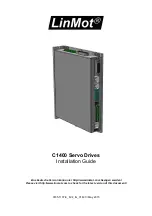
48
Troubleshooting and remedial actions
During motor operation, the motor or driver may fail to function properly due to an improper speed setting or wiring.
When the motor cannot be operated correctly, refer to the contents provided in this section and take appropriate action.
If the problem persists, contact your nearest office.
If ALARM LED is not blinking
If the motor does not operate properly even though the ALARM LED is not blinking, refer to the table below:
Phenomenon
The motor is not excited.
The motor can be turned
with the hands.
The motor does not run.
The motor rotates in the
direction opposite that
which is specified.
The geared output shaft
rotates in the direction
opposite motor rotation.
Motor operation is
unstable.
Vibration is great.
The electromagnetic
brake does not hold.
The TIM output does not
turn “ON.”
Possible cause
C.OFF input is “ON.”
Bad connection for CW or CCW
input.
In 2-pulse input mode, the CW and
CCW pulse inputs are both “ON” at
the same time.
In 1-pulse input mode, the pulse
signal is connected to the DIR input.
Electromagnetic brake is holding
(electromagnetic brake type only).
When 2-pulse input mode is
selected, the CW and CCW pulse
inputs are connected in reverse.
When 1-pulse input mode is
selected, the rotating direction input
is set in reverse.
A geared type is used whose
rotating direction is opposite that of
the motor shaft.
Bad connection of the pulse signal
line.
Small load
The electromagnetic brake is turned
on.
The “×10” input is turned “OFF”
during operation.
Remedial action
Turn the C.OFF input to “OFF” and confirm that the
motor is excited.
• Check the connections of the controller and driver.
• Review the specifications (voltage and width) for the
input pulse.
• Input the pulse signal either to the CW or CCW
input.
• Make sure the terminal with no input is set to “OFF.”
Connect the pulse signal to the PLS input.
Release the electromagnetic brake by turning the
power on.
Connect the CW pulse input to the CW pulse input
and CCW pulse input to CCW pulse input.
Set to “ON” when setting the CW direction or “OFF”
when setting the CCW direction.
•
TH
geared type rotates in the direction opposite
motor rotation at gear ratios of 20:1 and 30:1.
• All harmonic geared types rotate in the direction
opposite motor rotation.
• Check the connections of the controller and driver.
• Review the specifications (voltage and width) for
input pulse.
Reduce the current by adjusting the driver’s current
adjustment switch.
If the motor’s output torque is too great for the load,
vibration will increase.
To use an electromagnetic brake to hold the load in
position after the motor has stopped, turn off the
electromagnetic brake.
When the “×10” input is turned “OFF,” the TIM output
may not turn “ON.”
















































